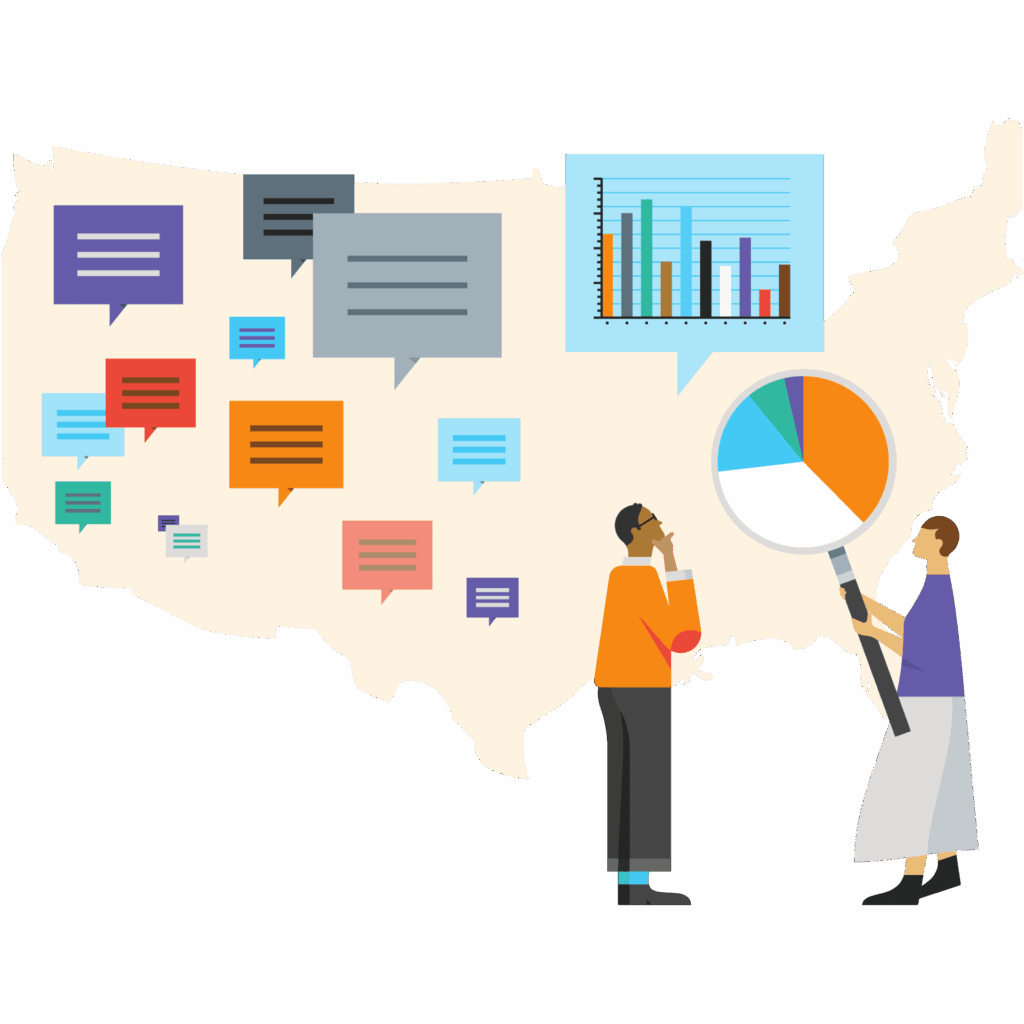NFF’s 2022 State of the Nonprofit Sector Survey offers insights into the impact of the past two years, from the pandemic to events that activated calls for racial justice.
Here’s what leaders had to say about how their organizations have been faring and the investments they need to secure their long-term futures.
We survived. We also learned many lessons from the pandemic-especially how to pivot to an online program. We provided our students a chance to process and discuss the murder of George Floyd through Zoom meetings and online community virtual forums. We engaged children with our program when they were isolated at home during the summer of 2020 and provided team members who checked regularly on the children when they didn’t show for camp. We also expanded our reach in our after-school program and began additional programs. We were resilient…We also received PPP funds which helped us survive as an organization but we are not sure how we will fill the gap we now have, moving forward without it.
Smaller-sized recreation and sports nonprofit, Midwest region
Leader identifies as White
The impact of 2020-2021 on how we work:
- As a result of the pandemic, 88% of respondents developed new or different ways of working that led to positive outcomes; 51% of those think these could be permanent changes.
- 28% were impacted a great deal by the events surrounding the murder of George Floyd. This rose to 49% for Black-led nonprofits.
- 24% were impacted a great deal by instances of politically or racially motivated violence and threats of violence. This rose to 45% for Black-led nonprofits, and 46% for AAPI-led nonprofits.
- Half of respondents reported that at their organizations, staff took on duties outside of their regular job description all or most of the time.
- As nonprofits and for-profits alike have been challenged by the Great Resignation, we saw nonprofits continue to face challenges around employing staff. When asked to name their top 3 staffing challenges, the most common responses were employing enough staff to do all the work (55%), offering competitive pay (51%), and staff burnout (36%).
Since 2019, the events that have most impacted our organization are anti-Asian hate incidents/crimes. There has been an increase of support in 2021, but I do not think it will continue into 2022 despite continued violence and hate towards Asian communities. In addition, Asian and Pacific Islanders are not being included in many people of color programming and funding solutions which has led to a decrease in funding for Asian and Pacific Islander communities from previous funding sources. As a diverse and small population, this will greatly impact culturally sensitive services for these communities.
Mid-sized civic engagement nonprofit, Western region
Leader identifies as AAPI
The financial picture emerging from 2020-2021:
- 70% of respondents overall saw their funding rise during the pandemic from 2019 levels.
- In the 2021 fiscal year (FY2021), 36% of nonprofits received more than half of their funding in unrestricted funds, including general operating support. (For purposes of this survey, we defined unrestricted funds as grants or donations nonprofits may spend in any way they believe is appropriate to further their mission.)
[I am not surprised by the high level of unrestricted funding for over one-third of respondents.] As a result of the devastation from the COVID-19 Pandemic organizations dealt with very unexpected issues and cost. I believe that donors and funders were more aware of the unforeseen issues and financial hardships and decided to be more flexible and generous with their contributions.
Larger-sized economic development organization, Southern region
Leader identifies as Black
There were lots of funds to provide more services but once money was expended, the services dried up. If there was a way to help nonprofits build sustainability into the money they receive or provide us with resources for sustainability it would be tremendously helpful so our critically needed services just don’t disappear.
Mary Drew, MS, MEd, CPS
Founder & CEO, Reality Check, Inc., Jaffrey NH
- 71% of all respondents received one or more Paycheck Protection Program (PPP) loans. For white-led nonprofits, that figure is 76%, as compared to 58% for Black-led nonprofits. This may be due to two factors:
- Fewer Black-led organizations applied for PPP loans (64% of Black-led nonprofits as compared to 77% of white-led nonprofits).
- Among those that did apply for PPP loans, 99% of white-led organizations received them versus 90% of Black-led organizations.
- 57% of respondents indicate that foundations have been more flexible with use of funds since March 2020.
Funding that was directly related to the COVID pandemic was significant. We are adjusting to the current/future where that funding has decreased significantly but the demand for our services has continued to increase.
Mid-sized human services nonprofit, Western region
Leader identifies as Latinx
What We Learned About Nonprofit Financial Health
Continue exploring 2022 State of the Nonprofit Sector Survey results
You can also take a closer look at the experiences of LA-area nonprofits.
Explore the Survey Brochure for more analysis, including charts and graphs of key findings.
The 2022 survey was conducted in partnership with EVITARUS and Ambit 360.


